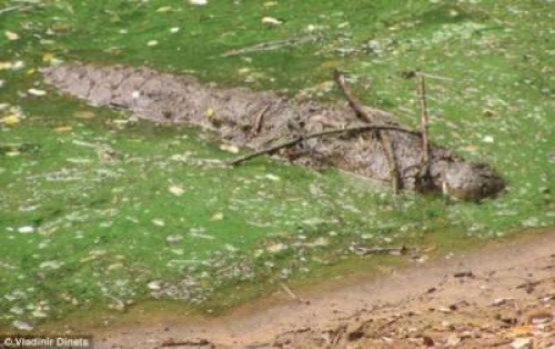Crocodiles And Alligators Use Sticks To Lure Prey, Shows Reptiles Have ‘Highly Coordinated’ Hunting Tactics [PHOTO]

Crocodiles can be creepy predators.
The reptiles have shrewd hunting skills with an ability to lure their prey, according to a new University of Tennessee study. For the first time, crocodiles were seen using twigs and sticks on their noses to bait birds.
The findings, published in Ethology, Ecology and Evolution, reveals how two kinds of crocodiles have been observed using tools as part of their predatory behavior. Vladimir Dinets, a research assistant professor in the Department of Psychology, was the first to see crocodiles using lures, fooling their prey into thinking sticks were floating on water. At times, the crocodiles would remain still for hours until the moment was right to lunge at the unsuspecting birds.
"This study changes the way crocodiles have historically been viewed," Dinets said in a statement. "They are typically seen as lethargic, stupid and boring but now they are known to exhibit flexible multimodal signaling, advanced parental care and highly coordinated group hunting tactics."
Dinets first observed the rare behavior in 2007 when watching crocodiles in shallow water in India. He then performed several observations on crocodiles in Louisiana -- both in bird-breeding grounds and nonrookery sites. He found that alligators placed sticks on their snouts to lure birds close enough to their mouths. Dinets noticed that this took place particularly during nest-building time and afterward.
“This is the first known case of a predator not just using objects as lures, but also taking into account the seasonality of prey behavior,” Dinets wrote in the study. “It provides a surprising insight into previously unrecognized complexity of archosaurian behavior.”
Dinets told Wired that the crocodiles go underwater and then surface from under floating twigs. "Then it takes some balancing act to keep the twigs from falling off. They might be collecting twigs onshore as well, but I've never seen them do so," he said.
While more research needs to be done to understand the phenomenon, scientists say the reptiles’ behavior may shed light on how other reptilian groups -- both existing and extinct -- capture their prey.
"Our research provides a surprising insight into previously unrecognized complexity of extinct reptile behavior," Dinets said. "These discoveries are interesting not just because they show how easy it is to underestimate the intelligence of even relatively familiar animals, but also because crocodilians are a sister taxon of dinosaurs and flying reptiles."
© Copyright IBTimes 2024. All rights reserved.






















